July 24, 2015
Air Date: July 24, 2015
FULL SHOW
SEGMENTS
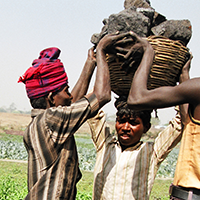
Coal Dethroned: Now What?
View the page for this story
Recently natural gas overtook coal as the dominant fuel for power generation in the United States, though its use is still growing in some developing nations. Climate writer and physicist Joe Romm believes coal’s days are numbered, and discusses with host Steve Curwood why natural gas is also a problematic energy choice given the urgent need to slash fossil fuel use for the sake of the climate. (08:55)
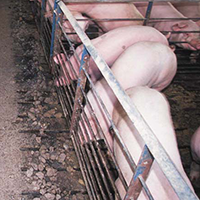
Beyond the Headlines
/ Peter DykstraView the page for this story
In this week’s trip beyond the headlines, Peter Dykstra and host Steve Curwood discuss the environmental costs residents pay for North Carolina’s hog farms, the global decline of seabird populations, and how, despite warnings, toxic algae blooms in Lake Erie continue to affect Toledo, Ohio’s drinking water. (04:30)
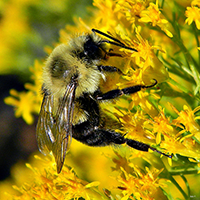
Emerging Science: Undervaluing Wild Bees
/ Shannon KelleherView the page for this story
Climate change, disease and insecticides all contribute to the loss of domesticated honeybees vital for crop pollination. But as Living on Earth’s Shannon Kelleher reports, wild bees are just as valuable as pollinators and preserving their habitat is vital for their biodiversity and our food. (02:10)
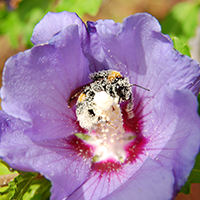
Pollinator Declines Threaten Public Health
View the page for this story
Altogether some 200,000 species of animals pollinate crops, and help supply up to 35% of the world’s food, but scientists say pollinator numbers are declining. New studies published in The Lancet examine the potential impacts of total and partial pollinator loss on staple crops and the availability of vitamins and nutrients. Living on Earth’s Helen Palmer discusses the findings with study author Dr. Samuel Myers, who explains how these deficiencies would impact public health. (06:30)
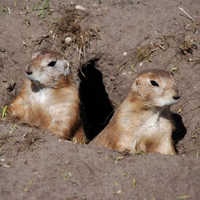
Prairie Dogs: Saving Mexico’s Prairie from the Desert
/ Ari Daniel ShapiroView the page for this story
Black-tailed prairie dogs once numbered in the billions across the grasslands of the Western US and Mexico, but ranchers essentially exterminated the rodent to make way for livestock. As One Species at a Time host Ari Daniel reports, without prairie dogs, the terrain can turn to desert. But some activists are working to revive the once-thriving prairie dog community and the Mexican prairie along with them. (05:30)
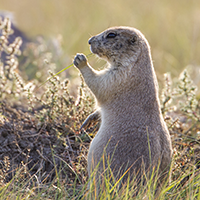
On Guard
/ Mark Seth LenderView the page for this story
Grasslands National Park in Saskatchewan, Canada is one of North America’s few remaining natural wild prairies. Walking across the dry ground, writer Mark Seth Lender observed a prairie dog town and other creatures of the plains, and the prairie dog on guard watched him suspiciously in return. (03:40)
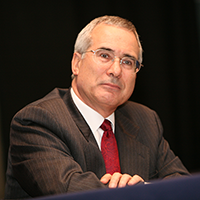
Why Are We Waiting To Save Ourselves?
View the page for this story
Scientists say that climate change is already happening, but despite a narrowing window for response, the world is reluctant to take action. In frustration, British economist Nicholas Stern, who wrote the authoritative Stern report on the costs of climate change, has written a new book “Why Are We Waiting?” Host Steve Curwood speaks with Lord Stern to learn why societies are so reluctant to make the changes necessary to preclude the worst possible effects of global warming, the cost of continued stalling, and why there is reason to remain optimistic. (16:05)
Show Credits and Funders
Show Transcript
HOST: Steve Curwood
GUESTS: Joe Romm, Sam Myers, Nicholas Stern
REPORTERS: Shannon Kelleher, Ari Daniel Shapiro, Peter Dykstra, Mark Seth Lender
[THEME]
CURWOOD: From Public Radio International, this is Living on Earth.
[THEME]
CURWOOD: I'm Steve Curwood. The need to slash the use of fossil fuels will be central to the Paris climate summit later this year – and that means the end for the fuel that launched the industrial age.
ROMM: The age of coal is clearly coming to an end. It’s not going to end tomorrow, and it’s not going to end in ten years, but over the course of the lifetime of many of your listeners, the world is going to use substantially less coal, ultimately going pretty close to zero, I think.
CURWOOD: Also a Mexican scientist unravels the mystery of why some prairies turned to desert – something was missing.
CEBALLOS: It was mind-blowing because all the way to the horizon, there were prairie dogs and prairie dogs and prairie dogs. And then the next day we saw badgers. Badgers are very rare in Mexico. It hit me immediately the idea that prairie dogs should have some role.
CURWOOD: That and more this week, on Living on Earth. Stick around.
[NEWSBREAK MUSIC: Boards Of Canada “Zoetrope” from “In A Beautiful Place Out In The Country” (Warp Records 2000)]
ANNOUNCER: Support for Living on Earth comes from United Technologies – innovating to make the world a better, more sustainable, place to live.
Coal Dethroned: Now What?
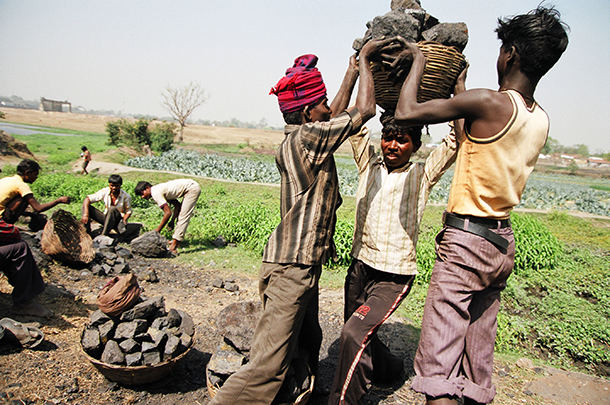
While coal use is petering out in the US, it’s still a prominent source for energy in the rest of the world. India is one of the top polluters worldwide where coal consumption is showing no signs of decreasing. (Photo: Bigstock Photo)
CURWOOD: From the Jennifer and Ted Stanley Studios in Boston and PRI, this is Living on Earth. I’m Steve Curwood. To avoid catastrophic global warming, scientists say we have to cut greenhouse gas emissions and that means slashing the use of fossil fuels. And new numbers indicate that change is already well underway. First, analysts report that saving the climate can also save money. Since 2012 the 9 Eastern states that use market-based incentives to reduce carbon emissions from power plants have reaped $1.3 billion in economic benefits and saved customers a half billion dollars. And for the first time in history natural gas is now outstripping coal when it comes to electric power generation in America, a major milestone on the way to rebuilding the energy economy. Joining us to discuss these developments and more is Joe Romm, scientist, writer, and head of the blog Climate Progress. Welcome back to Living on Earth, Joe.
ROMM: Thanks for having me.
CURWOOD: So recently natural gas passed coal, at least temporarily, as the dominant source of American electricity. Ten years ago this seemed unthinkable. What happened?
ROMM: Well, a lot of things have been pushing coal out of the marketplace. Renewable energy, particularly wind, has been coming down sharply in price and exploding in growth. Energy efficiency has slowed electricity demand growth. We've had the shale gas revolution which has brought down the price of natural gas and that has been substituting for coal also. And then we had a campaign, very effective campaign from the Sierra Club, to shut down the dirtiest and worst of the coal plants. In fact they just celebrated shutting down their 200th coal plant in Iowa. So all of this has combined to see the shift away from coal towards cleaner forms of electricity generation, which now are really as cheap as coal.
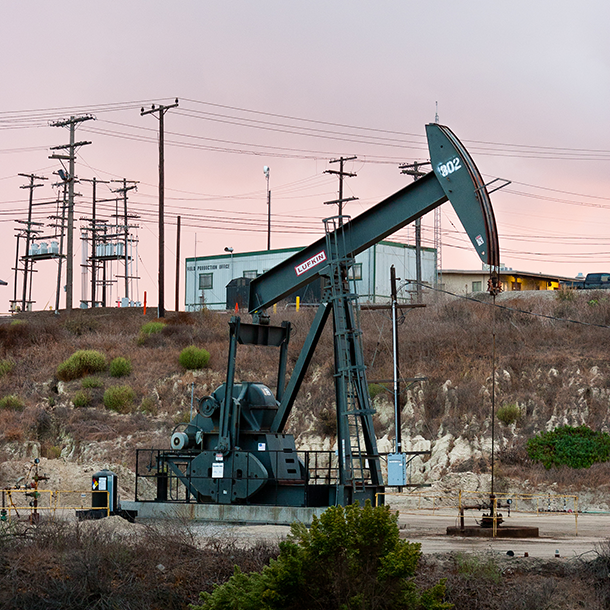
Natural gas has surpassed coal in the United States in large part due to fracking technology. (Photo: Erik Gustafson, Flickr CC BY 2.0)
CURWOOD: Natural gas is much better for air quality and this energy conversion will certainly save lives, but we know that methane leaks from the natural gas production process and distribution system, and those leaks are a serious problem for the climate. How good is this shift from coal to gas, how good is this really, if it's just ushering in a new type of fossil fuel with its own set of climate impacts?
ROMM: Well, I think two things. There is no question that if we want to avoid catastrophic climate change we are going to have to get off of fossil fuels and go down to zero carbon emissions, and that means getting off of coal, oil and natural gas sometime in the second half of the century. The specific case of natural gas...natural gas, people should know, is mostly methane, and methane is a very potent greenhouse gas. And over the short term, for instance over a 20 year period, it can be 80, 90 times as powerful at trapping heat as carbon dioxide is. So, yes, if you have a natural gas system, even a small amount of leaks can undermine the benefit of replacing a carbon-intensive coal plant with a much more efficient and cleaner natural gas plant, and there have been many studies on this recently which suggests that the leak rate is quite high. What to do about that? Well, some people are working in the area of reducing those leaks, others would recommend let's go straight to renewables and sort of use natural gas as a supporting or backup technology when the renewables aren't available. But ultimately, natural gas is really a short-term solution.
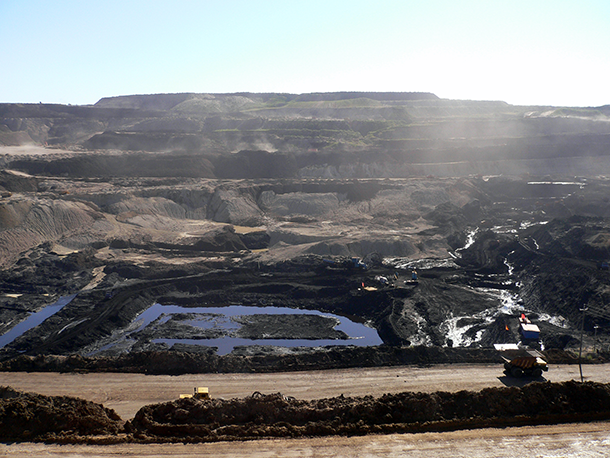
An open pit coal mine in Mongolia (Photo: Herry Lawford, Flickr CC BY 2.0)
CURWOOD: So, we may burn less coal here in the United States, but our nation exports plenty of it abroad, particularly from the west. What you make of that? The atmosphere doesn't care where coal is burned in terms of climate change.
ROMM: Absolutely, and that is a very big deal. There's no question that simply not burning it here, but selling it to other people who do burn it, as you say -- from a global warming point of view, it only matters what ends up in the atmosphere not where it comes from. Now, the good news is that many other countries have come to realize that coal is something they have to get off of pretty quickly. So, the European Union has been aggressively reducing carbon pollution and has recently proposed a very deep cut as part of their commitment for the upcoming Paris climate talks in December - a 40 percent reduction versus 1990 levels. The other big player, the country that has been responsible for literally 80 percent of global growth in coal demand since the year 2000 is China, and China last November announced a major deal with the United States, with President Obama, to peak its carbon dioxide emissions in 2030, and a week or two later it said it would peak its coal use in 2020. And I was just in China for several days and a great many people think that in fact coal is starting to peak in China right now. It's been declining in the last year or two. And I think it's safe to say that the era of very rapid global growth driven by China is now over.
CURWOOD: Critics say that the United States government practically gives away that coal from public lands in the west. What if the US raised the price of coal from public lands?
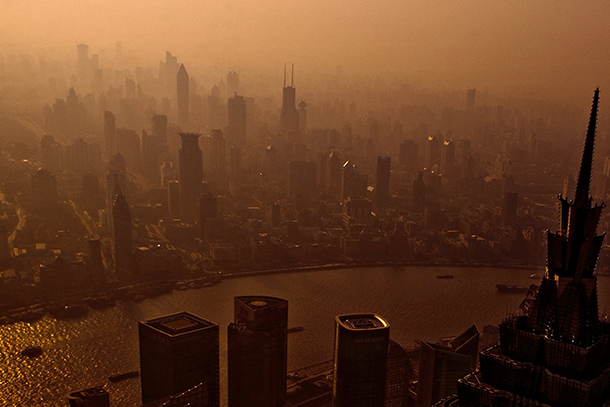
China has recently pledged to reduce its coal use, partially because of the public health crisis caused by burning coal near cities. (Photo: Lei Han, Flickr CC BY 2.0)
ROMM: Well, I think there is no question that it's really kind of obscene to lease coal mining for the area in the West is ridiculously cheap compared to the world market price of coal. So yes, the taxpayers are getting heavily ripped off—A to the benefit of coal companies and B to the detriment of the environment. So it's kinda lose-lose for Americans across the board. In a perfect world I think the United States would say: “you know we understand we have a responsibility to not help fuel other countries' increase in global warming pollution while we reduce our pollution.” And I am hopeful that as countries like China step up to the plate and say, "we're going to move off of coal," that that export market is going to dry up and and there's no question that many financial firms have said that the future of the export market is not bright.
CURWOOD: What about India? It seems to be a place that more and more coal plants are going up as China is saying that it has hit its peak emissions of coal burning.
ROMM: Yeah, it's a very good question. India looks at China and sees that China a country that has developed rapidly and brought a lot of people out of poverty. Now, China did so by a massive deployment of coal plants. Now I've been to Beijing, I think you’ve been to China. Anyone who has gone there sees what it has done to the air quality and understands that it's harming kids, it's reducing the IQ of kids, it's making people much sicker, it's ruining the water. I don't think India is going to make the mistake of following China's exact path and destroying its own local environment. Hopefully it will combine some coal with a transition towards clean energy because ultimately everyone is going to zero in the second half of the century whatever your current plan is now.
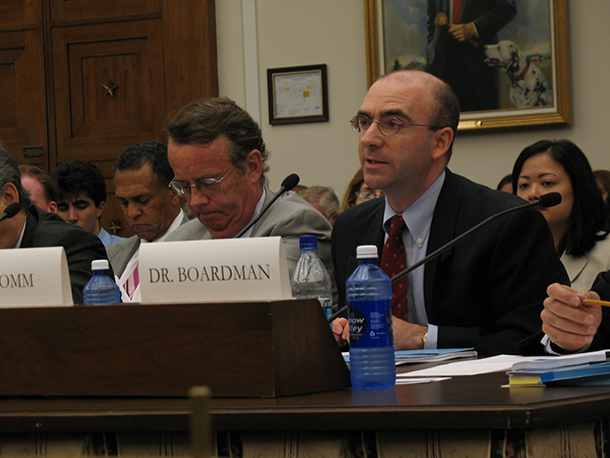
Joe Romm testifying before the House Science and Technology Committee. (Photo: Center for American Progress, CC BY 2.0)
CURWOOD: And the numbers that are out, that gas is passing coal here in the US, that folks are making money from the implementation of renewables that economists are seeing, means we are well down this path?
ROMM: Yeah, I think the age of coal is clearly coming to an end. It’s not going to end tomorrow, and it’s not going to end in ten years, but it's coming to an end, and over the course of the lifetime of many of your listeners, the world is going to use substantially less and less coal, ultimately going pretty close to zero, I think. We're in the beginning phases of this transition and over the next 10, 20, 30 years you're going to see continued explosive growth of wind power and solar power and batteries and electric cars and it will all come together in a move off of carbon entirely by 2050 or shortly thereafter.
CURWOOD: Scientist and writer Joe Romm is head of the blog Climate Progress. Thanks so much for taking time with us today.
ROMM: Thanks for having me.
Related link:
Joe Romm’s blog, Climate Progress
Beyond the Headlines
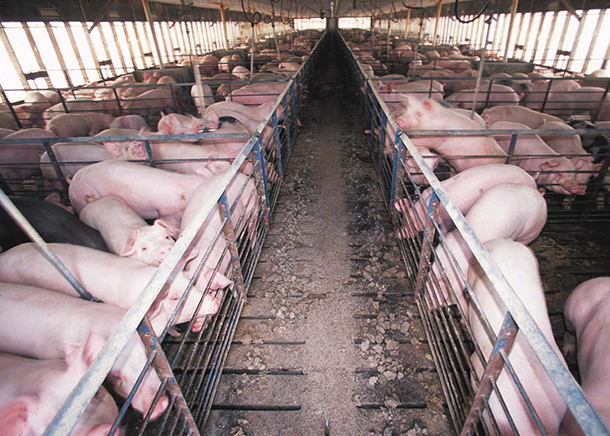
In North Carolina, millions of hogs are confined to small spaces on farms. Their waste is collected in lagoons, and storms in the area cause them to overflow and flood nearby towns. (Photo: EPA)
CURWOOD: Let’s dig down beyond the headlines now with Peter Dykstra, who keeps a sharp eye on all the news whether it’s fit to print or not. Peter’s with Environmental Health News, that’s EHN.org and the DailyClimate.org, and joins us on the line from Conyers, Georgia. Hi there, Peter.
DYKSTRA: Hi, Steve. I was really struck by a recent piece on the Quartz website about hog waste, pollution, environmental justice and really, really bad smells in North Carolina. I learned a few things. Most of them not so good.
CURWOOD: Let’s hear a few.
DYKSTRA: The good news is on the jobs and money end. There are an estimated 46,000 full time jobs in an $8 billion a year hog economy in North Carolina, and the industry is fond of saying it can smell the money. Fair enough, but what many residents of the hog belt get is quite a different smell. In one county alone, Duplin County, hogs produce twice the waste as the city of New York. That’s according to an environmental group’s estimate, since the state and the hog producers are a little shy about releasing the poop numbers.
CURWOOD: Wow, twice the waste of New York City from just one county’s hog farms. And this has been a problem for a long time right?
,_Belmont_-_geograph.org.uk_-_529175.png)
Seabird populations like the Northern Gannet are good indicators of marine ecosystem health. A recent study published in the journal PLOS ONE found that of the seabird populations monitored around the world, 70% have declined since the 1950s, which is likely a symptom of several underlying problems. (Photo: Mike Pennington; CC BY-SA 2.0)
DYKSTRA: Yes, and that’s the thing that really got me. This was a huge issue in the 1990’s, when heavy rains from several hurricanes caused huge hog waste spills. In 1995, the Raleigh News & Observer ran a series about pollution, environmental justice, and the clout of the hog industry in the state. The series won a Pulitzer Prize, and after an uproar, the state blocked the creation of new hog farms, but the industry found a workaround, and the environmental problems remain.
CURWOOD: So what’s the workaround?
DYKSTRA: If you can’t have more hogs, then make bigger hogs. In the past quarter century, according to government data cited by Quartz, the average size of a North Carolina hog brought to market has increased 27 percent, to 275 pounds. Bigger hogs, more waste; more waste, more smells and possibly more spills.
CURWOOD: 275 pounds? That’s a lot of bacon. Hey, what else do you have for us?
DYKSTRA: I’ve always thought one of the coolest things about seabirds are how some species feed by diving like a bullet into the water. Gannets are the best. But a study from the University of British Columbia says that globally, seabird populations have taken a startling dive: a nearly 70 percent decline since the 1950’s, according to a study that estimated the population trends of 500 seabird species.
CURWOOD: Whoa. What do they attribute this to?
DYKSTRA: Let me count the ways: overfishing of the fish seabirds need; seabirds get snagged in fishing nets and on longline fishhooks; marine pollution, loss of habitat, invasive species that impact seabird nesting areas, climate change and more. I could keep going.
CURWOOD: You are just a bundle of good news today, Peter. Any positive takeaways from all this?
DYKSTRA: Well, maybe that science has done its job in identifying a big problem and its sources. Now comes the messy business of policy and ocean politics to hopefully find a fix—or multiple fixes – and reverse the trend in seabird decline.
CURWOOD: Huh, OK – hey now it’s time for you to take us back into the realm of environmental history. What do you have this week?
DYKSTRA: Well I have a little recent history. We’re at the one-year anniversary of one of those little lessons you learn from history, in fact. The State of Ohio’s EPA met with city officials in Toledo to warn them that Toledo’s water supply was ill-prepared to cope with the algae bloom building in the western part of Lake Erie. It wasn’t just the state issuing warnings. A veteran environmental reporter named Tom Henry had been writing about this for over fifteen years – that’s another issue where the warnings go back to the twentieth century!!
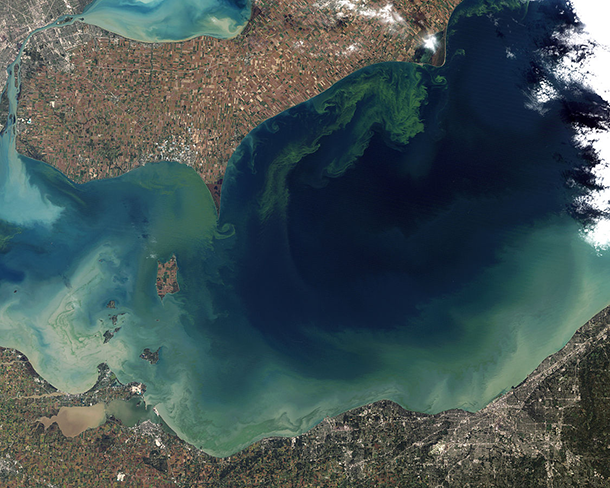
In 20111, torrential rains around the Lake Erie increased fertilizer runoff, which promoted the growth of the microcystin-producing bacteria, causing the worst cyanobacteria bloom seen there in decades. Cyanobacteria is often referred to as blue-green algae, and large blooms can be from space.(Photo: NOAA)
CURWOOD: And as I recall it wasn’t too long after this meeting that Toledo had a little problem.
DYKSTRA: If by “little” you really mean “enormous,” yeah. Five hundred thousand metro Toledo residents had their water supply shut down for two days last August when toxic algae clogged the city’s drinking water intakes. It was an important reminder that Lake Erie, a recovering poster child for large-scale water pollution, still has some big issues.
CURWOOD: And that story dominated the headlines, including here. So what’s the algae outlook for August 2015?
DYKSTRA: The initial forecasts by NOAA and the state were for a fairly mild year. But after a wildly rainy month of June in the Great Lakes region, forget that: NOAA now calls for a worse algae bloom in August than last year’s. So stay tuned.
CURWOOD: We shall. Peter Dykstra is with Environmental Health News, that's EHN.org and the DailyClimate.org. Thanks for taking the time, Peter.
DYKSTRA: OK, Steve, my pleasure. We'll talk to you soon.
CURWOOD: And there’s more on these stories at our website, LOE.org.
Related links:
- The world eats cheap bacon at the expense of North Carolina’s rural poor
- The News & Observer’s series Boss Hog: The power of pork
- The decline of the world’s seabirds
- Toxic algae bloom in Lake Erie shut down water supplies to the city of Toledo
- NOAA: 2015’s Lake Eric algae bloom likely worse than last year’s
[MUSIC: Piggies, The Beatles, The Beatles, Capitol, 1668]
CURWOOD: Coming up...pollinators are disappearing in many places, and that could affect the health benefits of our fruits and vegetables. Stay tuned to Living on Earth.
[CUTAWAY MUSIC: Charango Cakewalk, Chicano Zen, Sheridan Square, 2006]
Emerging Science: Undervaluing Wild Bees
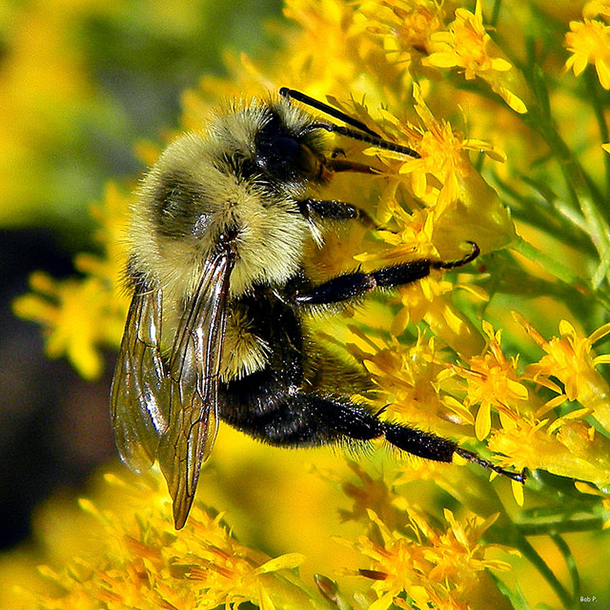
One of the most abundant wild bee pollinators in North America is the common eastern bumblebee (Bombus impatiens). It is one of 49 species of bumblebees in the United States. (Photo: Bob Peterson, Flickr CC BY 2.0)
CURWOOD: It's Living on Earth, I'm Steve Curwood. Just ahead, how a passionate and dedicated scientist is helping restore the Mexican prairie, but first this note on emerging science from Shannon Kelleher.
KELLEHER: Over the past decade, farmers and beekeepers have raised the alarm about empty hives and disappearing honeybees. But maybe they should also keep an eye on wild bees.
Wild bees pollinate hundreds of crops, including grocery store staples like almonds, peaches, and onions. Scientists from the University of Vermont and other institutions around the world calculated that wild bees generate about $3,000 in value for every hectare they pollinate. This means that wild bees are actually just as valuable for crop pollination as domestic honeybees, which contribute a whopping $15 billion each year in agricultural value and keep the produce aisle stocked with everything from apples to zucchini.
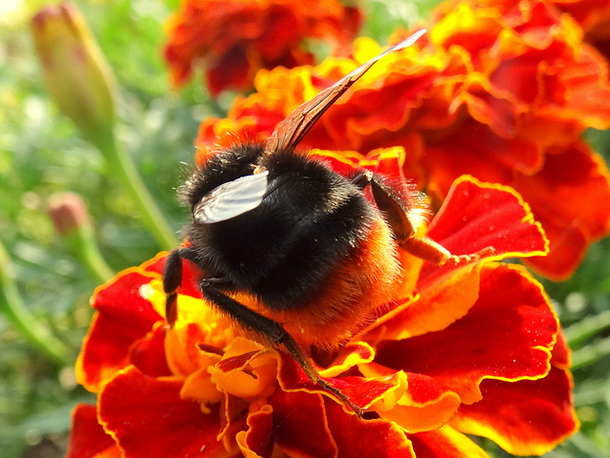
The red-tailed bumblebee (Bombus lapidaries) is a highly recognizable wild bee species in Europe. It can be found in many different habitats, including: farmland, grassland, heathland, towns, gardens, uplands woodlands, and the coastline. (Photo: Tom Phillips, Flickr CC BY 2.0)
Scientists also found that 80% of all bee-pollinated crops are pollinated by only 2% of wild bee species. The top pollinators are the common eastern bumblebee in the United States and the red-tailed bumblebee in Europe—species that have actually continued to thrive with the emergence of modern agriculture.
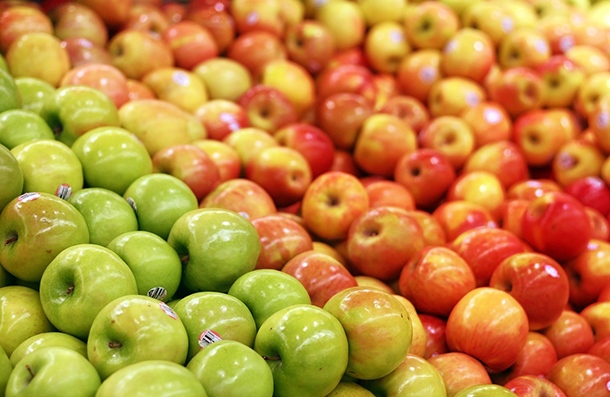
Without bees, the produce aisle would look pretty empty. Wild bees and domestic honey bees pollinate apples, mangoes, peaches, avocadoes, tomatoes, walnuts, and many other crops. (Photo: Pixabay CC0 Public Domain)
But although they pollinate fewer crops, other wild bee species are still important. Scientists say it’s crucial that we have a variety of wild bees around in case the ones we rely on most suffer from climate change or some new insecticide. The more diversity there is, the more resilient bees are likely to be. And besides, as researchers point out, conservation should be about more than just how humans can benefit. Although when you consider how heavily our food supply relies on the survival of bees, maybe a little selfishness isn’t the worst motivation.
That’s this week’s note on emerging science, I’m Shannon Kelleher.
Related links:
- University of Vermont wild bee pollination study
- Loss of pollinators can increase risk of malnutrition and disease
- Wild bee conservation for wild blueberry fields
Pollinator Declines Threaten Public Health
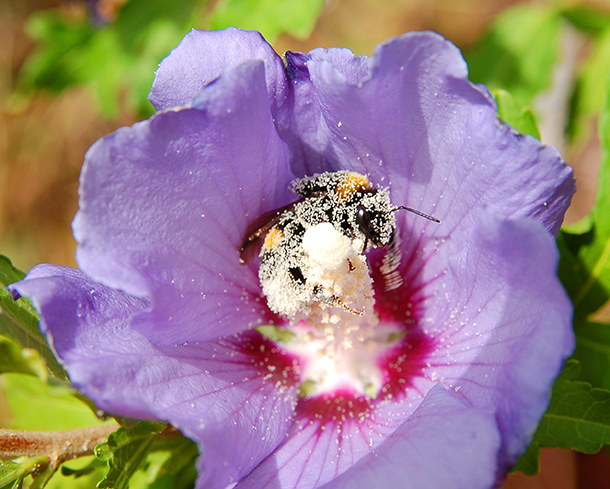
Animal pollinators, especially bees, are necessary for the production of fruit, vegetables, nuts, and seeds, which are vital for a balanced diet. (Photo: Luc Viatour, Wikimedia Commons CC BY-SA 3.0)
CURWOOD: Well, whether it’s wild bees, or the ones that supply us with delicious honey, the territory that bees occupy seems to be shrinking with climate change. And of course, since so many of our crops depend on pollination by insects, this could mean declining yields of fruits and vegetables for us, and thus declining amounts of some of the most important vitamins and minerals for human health. New studies published in the journal "The Lancet" tally up the health costs in terms of vitamin deficiency, sickness and even death due to pollinator loss. Living on Earth’s Helen Palmer spoke with one of the study authors, Dr. Sam Myers of the Harvard School of Public Health, who explained what they did in the study and what they found.
MYERS: We looked at the populations of 156 countries around the world, and we estimated the per capita intake of 224 different food commodities, and then we looked at how the intake of those food commodities and the micro-nutrients within those foods would be different in the context of either 100 percent, 75 percent or 50 percent declines in animal pollinators.
PALMER: So you studied all in all 224 types of food in 156 countries. I realize this is a great spread, but give me the broad brush of what you actually found.
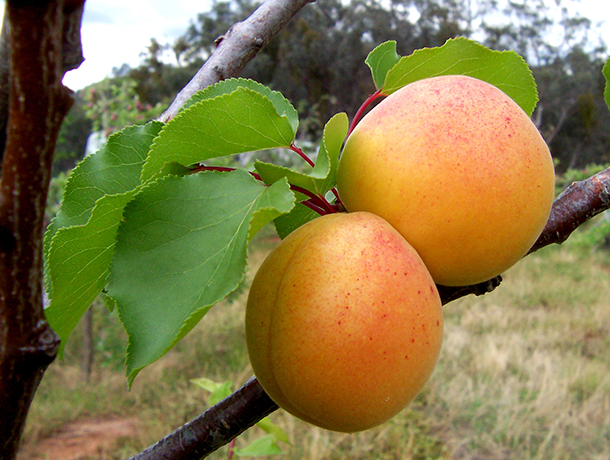
Apricots depend on pollination and are high in Vitamin A, a nutrient essential to healthy eyes and reproductive organs. (Photo: Fir0002, Wikimedia CC BY-SA 3.0)
MYERS: Well, so what we found was that in the least developed countries, particularly in sub-Saharan Africa and South Asia, we see a significant increase in the risk of vitamin A deficiency and folate deficiency. Complete pollinator declines would place 71 million people around the world at new risk of vitamin A deficiency and over 130 million people at new risk of folate deficiency. In addition, there are already between one and two billion people suffering from those deficiencies, and so for them the deficiencies would become more severe. For folate deficiency one of the major health outcomes is birth defects, whereas vitamin A deficiency would've had more to do, for example, with child mortality.
But people in more developed settings were more vulnerable to pollinator declines because their risks of the non-communicable diseases, of heart disease and stroke and certain cancers, their baseline risk was already higher. So the loss of pollinator dependent food groups increased their risk still further and so we found large burdens of disease in places like Eastern Europe and Central and Eastern Asia in response to pollinator declines and really across the developed world.
PALMER: Was this a real world test or were you just projecting forward given the amount of pollinator services we get as to what would happen if bees declined?
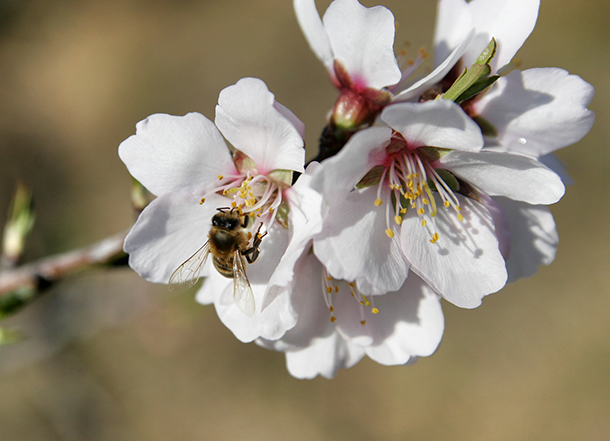
A bee pollinates an almond flower. The Lancet study suggests that a decline in consumption of nuts, which have important heart health benefits, may lead to higher rates of heart disease. (Photo: Fir0002Flagstaffotos, Wikimedia CC BY-NC 3.0)
MYERS: Well, so we were not saying that our scenarios were playing out right now today across the world. In fact, what we were looking at is just a variety of scenarios to say, if these trends were to continue and pollinators do continue to collapse, what would be the health implications? And I think one of the really important findings from this study was an analysis that we did to ask whether the burden of disease that we were seeing was coming from local pollinator declines, meaning pollinator declines within that country, or whether they were coming from global pollinator declines, from other countries that were trade partners from which various foods were being imported. And my initial hypothesis was that the trade was going to be very important. I think I'm biased as somebody who lives on the east coast of United States and sees most of my produce come from other places, but we were surprised to find that, in fact, 82 percent of the total burden of disease from pollinator declines resulted from local pollinator declines within the country whose health was being affected. And I think that's an important finding because it suggests that how a given country manages its own pollinator populations actually has very significant bearing on its own public health.
PALMER: Quite an alarming scenario that you're painting Dr. Myers, because obviously we're expecting a growing population to several billion more, maybe as many as 10 billion, and obviously we're seeing declining pollinators globally.
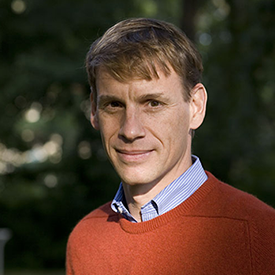
Dr. Samuel Myers is a Senior Research Scientist at the Harvard T.H. Chan School of Public Health, an Instructor of Medicine at Harvard Medical School, and a Staff Physician at Mount Auburn Hospital. (Photo: courtesy of Samuel Myers)
MYERS: That's right. And so you're touching on a much broader set of questions which I think are very very important, and at the same time that the pollinator paper came out, we also released a paper showing that human-caused carbon dioxide emissions are reducing the nutritional value of foods, and that we anticipate hundreds of millions of people around the world will be pushed into risk of zinc deficiency as a result of the reduced nutritional value of the foods that they eat. And both of those papers came out in conjunction with a Rockefeller Foundation Lancet Commission on Planetary Health report, which is a much broader look at the myriad ways that human-induced transformations of our planet's natural systems may come back to affect human health. And so we need to think about a whole suite of complex changes which are under way and that pollinator declines is one part of the story, but so are impacts of climate change on agricultural yields and changes in the status of global fisheries, changes in the nutritional value of food in response to carbon dioxide in the atmosphere, into complex environmental changes which are going to be interacting to produce what I believe will be significant headwinds in trying to meet growing demand for food around the world.
PALMER: So what is the take home message from your study?
MYERS: Well, I think the take home message is that we cannot continue to rapidly transform all the natural systems on the planet without experiencing consequences to our own health and well-being, and what's been viewed for decades as a growing environmental crisis really needs to be viewed as also a growing public health crisis.
CURWOOD: That’s Dr. Sam Myers of the Harvard School of Public Health, in conversation with Living on Earth’s Helen Palmer.
Related links:
- The Lancet study on the effects of pollinator declines on global health
- Human-wrought environmental changes impacting crops and pollinators could harm health of millions
- About vitamin A deficiency
- About folate deficiency
- Pollinators in decline around the world
- The effect of increased atmospheric carbon dioxide on zinc deficiency
- Report of The Rockefeller Foundation-Lancet Commission on planetary health
- About Dr. Samuel Myers
Prairie Dogs: Saving Mexico’s Prairie from the Desert
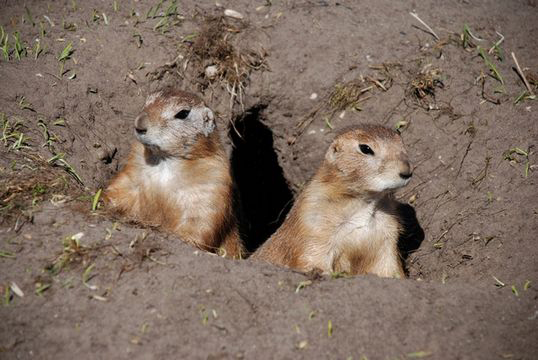
Prairie Dogs (Photo: Encyclopedia of Life)
CURWOOD: Well, the health of our land and landscape depends on a delicate interdependence between all the parts of the ecosystem, and if you remove a species, you can upset the whole balance. Today, reporter Ari Daniel Shapiro has the story of one particular animal, and its vital role in Mexico's prairie.
SHAPIRO: Gerardo Ceballos is only 54, but he feels like he’s racing against a clock.
CEBALLOS: I don’t have so many years left.
SHAPIRO: Ceballos is refusing to let his time run out before restoring a special place in his native Mexico.
Our story actually starts well before Ceballos was born – back in the 1800s – when cattle ranching was surging through the prairies of North America, from Manitoba, Canada all the way down to Chihuahua in Mexico. And this is where the real heroes of our story come in – though, at the time they were no heroes to the cattle industry. I’m talking about Cynomys ludovicianus, or black-tailed prairie dogs.
CEBALLOS: Prairie dogs are really nice animals. They are the size of a relatively large cat.
SHAPIRO: They’re a kind of squirrel that can stand on two legs to survey the grasslands for predators. And prairie dogs thrived in North America.
CEBALLOS: Probably 30 billion prairie dogs used to live in those grasslands.
SHAPIRO: But ranchers came to believe that prairie dogs were competing with their cattle for grass, and that cows and horses were breaking their legs by stepping into the prairie dog burrows. Opinions are divided on how serious these problems were. But many ranchers were convinced – and with support from the US government – they launched an all-out war on the prairie dogs. One weapon of choice was a kind of nerve toxin.
CEBALLOS: It’s a poison that will produce convulsions, a failure of the lungs and the heart. It’s a really nasty thing.
SHAPIRO: Tablets of this stuff were tossed down into the burrows, where they produced a toxic vapor that killed everything in its wake.
CEBALLOS: We are talking about probably billions of prairie dogs.
SHAPIRO: Billions that were killed by this toxin?
CEBALLOS: By poisoning and then by the advance of agriculture. It has been one of the most dramatic, drastic exterminations of an animal by humans.
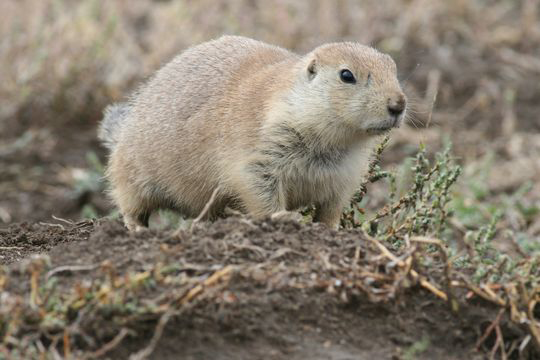
Cynomys ludovicianus Black-tailed Prairie Dog (Photo: Arthur Chapman)
SHAPIRO: Within 50 to 60 years, prairie dogs were eradicated from 98 percent of the area they used to call home; from 30 billion animals to 1 or 2 million.
Without prairie dogs, the prairies transformed. In Mexico, the desert moved in – thanks to a shrub called mesquite. It pushes a deep root into the Earth, sucking up water, and it attracts small animals that devour the grasses ringing the mesquite.
Prairie dogs can’t stand the plant. It blocks their view of the horizon where a predator might be lurking. So they do whatever they can to get rid of it. They chew up the roots. They suck on the stems. They run around like little gardeners, keeping the desert at bay.
So with very few prairie dogs left, the mesquite helped create desert scrubland until there was little grassy prairie remaining. And with the arrival of the desert...
CEBALLOS: You lose the ability of this landscape to maintain wildlife and plants. But also the scrubland is not good for cattle.
SHAPIRO: So the land no longer supported the very ranching it was altered for.
Let’s fast forward now to the summer of 1987, when Ceballos was in the middle of his doctorate in Arizona. He and his wife were driving back to Mexico through what used to be the grasslands, in Chihuahua, an area he’d never visited before. It was pretty much all desert. But then one day...
CEBALLOS: We were not prepared mentally to see what we saw.
SHAPIRO: Grasslands waving in the wind. This area had been spared.
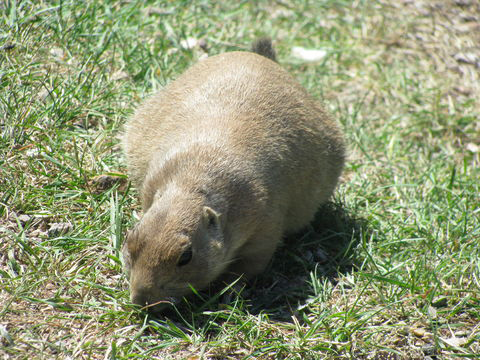
(Encyclopedia of Life)
CEBALLOS: It was mind-blowing because all the way to the horizon – there were prairie dogs and prairie dogs and prairie dogs. And then the next day we saw badgers. Badgers are very rare in Mexico. Golden eagles are also very rare in Mexico, and we saw more than 20 there in one single day. It hit me immediately the idea that prairie dogs should have some role.
SHAPIRO: Some role in making the prairie possible. In the last 20 years, as an ecologist at the National Autonomous University of Mexico, Ceballos has shown that prairie dogs are a keystone species. That is, everything in the grassland ecosystem depends on them. Their burrows provide shelter for small mammals. Predators – like coyotes and hawks – feed on prairie dogs. These days, Ceballos is resuscitating the prairies, by reintroducing the prairie dogs.
CEBALLOS: Within one year, they destroy most of the mesquite.
SHAPIRO: He’s also reintroducing black-footed ferrets – a species that hasn’t been in Mexico for at least a hundred years, pronghorn antelopes, bighorn sheep, wolves - even bison, which he’s getting from the US. He’s partnered with environmental groups and the government to create a reserve that protects these species, and then offers local people ways to benefit economically from the grassland.
CEBALLOS: A good scientist has to do good research, but then has to translate it into action. There is no way that we can continue just being like historians – recording all the things that we are losing, instead of becoming actors. Now, my main objective in life is to save as many species of plants and animals as I can.
SHAPIRO: Which is why – even at 54 – Ceballos feels he doesn’t have a moment to waste. He has a legacy to leave his country. For Living on Earth, I’m Ari Daniel Shapiro.
CURWOOD: Our story on prairie dogs is part of the series, One Species at a Time, produced by Atlantic Public Media, with support from the Encyclopedia of Life.
Related links:
- Atlantic Public Media’s One Species at a Time Series
- More about the Encyclopedia of Life
- More about Ari Daniel Shapiro
On Guard
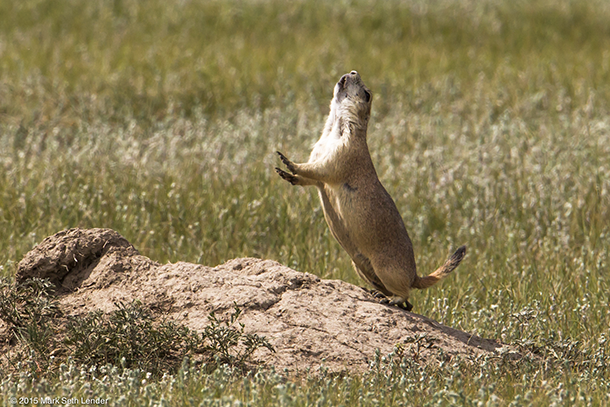
Prairie dog on guard jumps and barks. (Photo: Mark Seth Lender)
CURWOOD: Now, as that story demonstrated, prairie dogs are to the prairie what krill is to the ocean. Without them, that sea of grass is a dead zone. But that wasn’t what most struck Mark Seth Lender, when he visited a prairie dog town in Grasslands National Park, Saskatchewan. No, what impressed him the most was those little dogs’ bravery.
Hero: Black-Tailed Prairie Dogs, Grasslands National Park, Saskatchewan
© 2015 Mark Seth Lender
All Rights Reserved
LENDER: Dog on Guard does a jump-up bark, jump-up bark again. And all over Prairie Dog Town all the other dog guards jump-up back: below that ridge; up on the knoll; across, in the open, below the shadow of the mesa that rises like a wall. Must’ve seen some thing, some one. Got them started like the tattoo on a child’s tin drum. Could have been a hawk rolling on silent wing in the bright morning air. Could have been coyote, hungry enough, prowling the prairie on a daytime walk. Coulda been prairie rattlesnake sliding across the sunlit road with her rattle in the air. But our eyes are pretty much as good as any Dog of the Prairie, and I haven’t seen a thing round here. Perhaps they only jump-up bark to say: “I’m at my post, I am on guard, I’ve got your back.”
And the prairie dogs not on guard go about their business:
Dog, lying low.
Three dogs standing up.
Dog chewing on a blade of grass like some old farmer.
Young dog all stretched out on the black earth to cool herself…
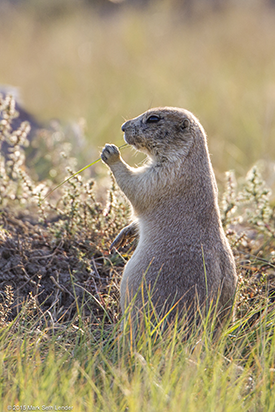
Prairie dog chews a blade of grass like an old farmer. (Photo: Mark Seth Lender)
But now Dog on Guard crouches like a spring held in place by the thickness of a hair. And it’s jump-up bark nose in the air mouth in a howling shape. This time quite clear what he sees:
MAN!
COMES!
TOWARDS!
ME!
Three nights ago badger came here on a raid. Tore the hell out of that mound over there like a steam shovel on a bad-drunk-day. Claw marks in the soft dry earth, square and long and straight (and sharp as a cut nail rake). And, on the parched clay where water puddled in the rains (the cracked landscape laid out like tiles on some abandoned floor) there are skulls. A jawbone, incisors pointing up like tusks. A skeleton where a ferruginous hawk made a kill, bones laid out in perfect parallels…
Prairie dog nightmares. And us, our kind, the very worst of them:
10 yards –
5 yards –
10 feet –
The closer I get the faster that guard dog barks, clipped and tight, the tone ascending:
White-tailed doe crosses the road at a run.
- Dog on Guard does not move.
Burrowing owl tucks out of sight.
- Dog on Guard just stares.
Big Bison Bull resting on his side, raises his great head, down in the arroyo way down there…
- Dog on Guard stands firm, until the last dog is safely underground all over Prairie Dog Town.
Writer Mark Seth Lender recorded some of the prairie dog's calls
stream/download this segment as an MP3 file
Red moon rising on the red prairie, full as a rising prairie sun. When day comes it all begins again: Dog on Guard. Just like the day before (and the day before that), if he survives the night.
CURWOOD: Mark Seth Lender in Grasslands National Park, and there are photos at our website, LOE.org.
Related links:
- Grasslands National Park
- More about the Black-tailed Prairie Dog
- Wes Olson guided Mark Seth Lender at Grasslands National Park
- Learn more about visiting Saskatchewan’s Grasslands
- About writer Mark Seth Lender
[MUSIC: Stephane Grappelli and Vassar Clements, Alabamy Bound, Together At Last, Flying Fish Records, 1987]
CURWOOD: Coming up...the British economist who famously put a price on the effects of global warming asks – why are we waiting instead of acting to stop it? That's just ahead on Living on Earth. Stay tuned.
ANNOUNCER: Funding for Living on Earth comes from United Technologies, a provider to the aerospace and building systems industries worldwide. UTC Building & Industrial Systems, provide building technologies and supplies container refrigeration systems that transport and preserve food and medicine with brands such as Otis, Carrier, Chubb, Edwards and Kidde. This is PRI, Public Radio International.
[CUTAWAY MUSIC: Lagbaja! You and Me No’ Be Enemy (We Be Friends), We, Motherlan’ 2000]
Why Are We Waiting To Save Ourselves?
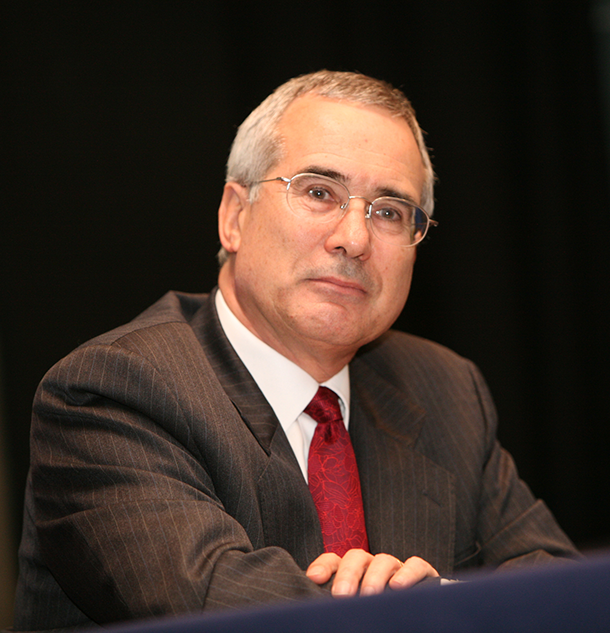
Lord Nicholas Stern is a British economist and chair of the Grantham Research Institute on Climate Change and the Environment at the London School of Economics. He is the author of the 2006 Stern Review: The Economics of Climate Change and the soon-to-be-released book Why Are We Waiting? (Photo: LSE)
CURWOOD: It's Living on Earth. I'm Steve Curwood. Nicholas Stern chairs the Grantham Research Institute on Climate Change at the London School of Economics and is a leading economist. Since 2006 and his seminal report, the Stern Review on the Economics of Climate Change, Lord Stern has become increasingly alarmed that the opportunity to prevent catastrophic global warming may soon disappear. His new book asks the urgent question, "Why Are We Waiting? The Logic, Urgency and Promise of Tackling Climate Change". It contends that the next two decades offer a special and unique moment in human history as global factors coincide. The world’s economy is undergoing a structural change, and there’s still time, perhaps, to keep the average global temperature from blowing past the benchmark two degree Celsius rise, the max that scientists think the planet can safely handle. Author and economist Nicholas Stern joins me on the line from London now. Lord Stern, welcome to Living On Earth.
STERN: Thank you very much. It's very nice to be with you.
CURWOOD: First of all, why did you write this book?
STERN: It's 10 years since I started work on the Stern Review on the Economics of Climate Change. We've learned a lot in the last 10 years, and we have to make big decisions in Paris at the end of this year.
CURWOOD: Now, some people would say that your Stern Review back in 2006 turned a lot of hair gray. People were really taken aback by how serious you said that things were at the time. Where are we today in comparison to that?
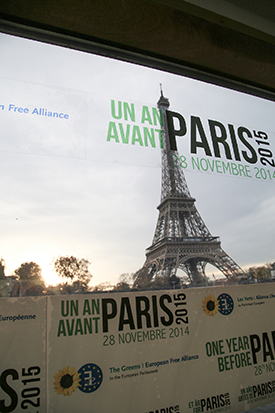
From November 30-December 11, 2015, Paris will host the 21st Session of the Conference of the Parties to the United Nations Framework Convention on Climate Change (aka “COP 21”). Climate action plans made at the conference will be crucial in order to keep global warming close to pre-industrial temperatures. (Photo: greensefa, Flickr CC BY 2.0)
STERN: Looking back I think I underestimated the risks at that time. The emissions have risen faster than we anticipated 10 years ago when we began that work. A lot of the effects of climate change, such as the melting of Arctic ice, have come through more quickly than we thought, and a lot of the things that have been left out typically of the climate science modeling and analyses because they’re difficult to quantify, like the possible effects of the release of methane from the thawing of permafrost, those kinds of things look still more troubling than they did a decade or so also ago, but going into deeply unknown territory, deeply dangerous territory, and we’re doing it in a period which is likely to be about 100 years, which is tiny in terms of human experience. We would be moving to temperatures we haven't seen on this planet, at 3 degrees centigrade, let alone 3.5 or 4, at 3 degrees centigrade, for 3 million years. Southern Europe could look like that Sahara desert. Big parts of Florida, Bangladesh and so on would be underwater. Hurricanes much more intense than we've experienced. So for all those reasons I think that we underestimated then the potential risks of unmanaged climate change.
CURWOOD: And just to follow up on matter of permafrost, we saw in recent weeks publications indicating that oh, we could easily lose 130 gigatons of carbon through the top layer of the permafrost over the rest of the century, which means that if we were to keep this 2 degrees centigrade target in focus, we have a tiny amount of room for further emissions, not very much room at all.
STERN: We don't have much room for emissions and that shows the ..underlines the urgency of the problem. We going to have to peak as soon as we can, ideally in the next five years or so as a world, and start bringing down emissions from there. At the moment we don't look to be on that track, but I do hope that we could go for a strong agreement in Paris which would allow us to accelerate and raise our ambitions after Paris, because I have to say, that the moment the ambitions in Paris that are currently being articulated across the world look to take us rather far above a two degree centigrade path where that means two degrees centigrade as an increase in average global surface temperature relative to the 19th century which is the usual benchmark for measuring change, and two degrees is the standard figure from scientists above which climate change is seen to be very dangerous. We look like we're on a path that is much more like 3.5 degrees centigrade, and what we're going to have to do is do the best we can in Paris and then put in place strong measures to raise ambitions from there.
CURWOOD: You called our species Homo Sapiens, the Latin word here means “wise”. But the title of your book is "Why are we waiting?" It sounds like we are quite unwise as a species, and you say the big deal that is coming up in Paris is not going to be enough to save us. Why are we waiting? What is the problem? Why is civilization stuck and unable apparently at this point to act to save itself?
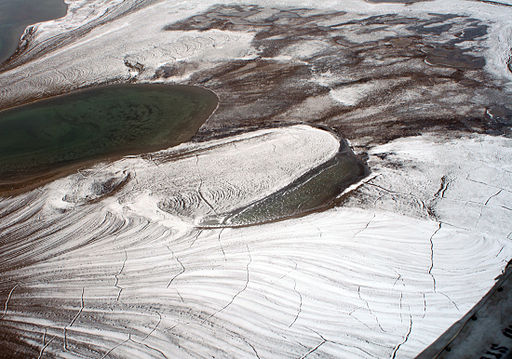
As permafrost thaws, organic material is freed and broken down by microbes, which release the potent greenhouse gas methane, contributing to already sky-high atmospheric carbon concentrations. These emissions were not accounted for in previous climate change calculations. (Photo: Brocken Inaglory, Wikimedia CC BY-SA 3.0)
STERN: Partly it is the short-termism of policymakers who...many of whom don't seem able to give us and share with us and respond to our own vision of the alternative way of doing things. Partly it's vested interests. This is a very radical change. It's an energy industrial revolution and that means disruption, it would mean disruption to high hydrocarbon ways of doing things. So that's the second reason and the third reason is that there are still some pushing of a climate skeptical story. That's waning because it’s so irrational and so in conflict with the evidence.
CURWOOD: Now, in your book, though, you point to this denialism as being a function of some psychological barriers for us, that there's perhaps comfort for us as humans to say, "well it can't really be all that bad, so it's not that bad."
STERN: Psychologically it's quite hard to imagine things which are so radically different from where we on now. One problem on the psychological side is how far this could be away from what we currently understand. People worry about the nature of change, and how easy it is to make those changes. Those psychological issues are profound, and that's why social movements, leadership, education is so important, and, for example, that's why the intervention of Pope Francis was so important. That's real leadership, showing imagination, showing responsibility, showing what the possibilities really are.
CURWOOD: Now, we don't have time to take your course on this, but if you could briefly touch on some of the structural barriers that you see in front of us because these are pretty big as you describe them in your book.
STERN: The rich countries grew rich on high hydrocarbon, high fossil fuel growth, and those countries now which are much poorer than we are, are growing more quickly than we are, and they're going to have to find different ways of doing things if the world is going to be a livable place. And the argument that we can as a world in those countries in particular can have much higher standards of living without using fossil fuels in the way we used them is a very important argument to win. It's a correct argument. There is tremendous potential in those alternatives. Going, trying to get rich how we got rich through fossil fuels and hydrocarbons would be self-destructive to the world. It would undermine and set back and reverse development. A second element of the structural story is the whole city structures themselves. We're now about 50 percent of the world's population of 7 billion people - in other words 3.5 billion people - in cities now. We will be 70 percent of world's population of over 9 billion people in the middle of the century 2050. That will be around 6.5 billion people in cities. So, our cities are going to go from 3.5 billion to 6.5 billion in just around three decades of so. How we build those cities of the world will be of fundamental importance because you get real structural lock-in. Some of the roads in London, the city that I'm talking to you from now were laid out by the Romans, and they still follow the same path, and indeed we built our own underground railway system underneath them. So you get very long shadows from decisions on the structure of cities, and that's why it's so important that we make good decisions on those in the coming two decades.

Although it’s currently the world’s largest atmospheric carbon dioxide polluter—contributing about 23% to global emissions in 2014—it seems China is on the verge of change. The country plans to cap its carbon production and shift 20% of its energy supply to non-fossil fuels by 2030. (Photo: ASDFGHJ, Wikimedia CC BY-SA 3.0)
CURWOOD: How do we get these developing societies - these countries - to trust us when we're asking them to do not what we've done, but as we want them to do?
STERN: I think two ways: one is to give good examples and the second is to support them through technology and some finance in making the changes that are necessary. China announced its targets to go to Paris and it involves 60 to 65 percent reductions in emissions output, 2005 to 2030. That's a very big change, and I think China being China, which normally doesn't go beyond what it thinks it can do, will probably do better than that. It's very important that the rich world understands just how rapidly China is changing. China's economy still growing, but they’ve peaked their use of coal. They're going to double the percentage of non-fossil fuels in their primary energy mix in the next 15 years. China's changing very rapidly so what we have to do here is not quite say how do we get other people to do things. I think we have to say how are we going to change our ways in fashions that are very attractive and go much lower carbon, and how are we going to support others in making the changes that they are starting to make, and as we do that we'll recognize that actually it's going to be more competitive to be clean. Those countries which are dirty are going to find it more difficult to compete in the world.
CURWOOD: Let me talk about your profession for a moment. Your academic discipline of economics...some folks point to economics as being a big part of the problem, that traditionally we haven't valued the air or clean air, we haven't valued the forest unless the trees are cut down and so forth, so called externalities aren't included in much economic forecasting and understanding. And this gets in the way of people seeing that we could have in fact more prosperity with the kind of future that you suggest that we must have. How do you deal your own profession's take on the question of climate?
STERN: I think that well used economics points in the right directions. The burning of fossil fuels is killing people directly now and it's changing our climate radically in the future. Those are externalities, those are costs, and I think good economics highlights those costs. Bad economics tries to ignore those costs.
CURWOOD: Ah ha. So when critics argue that tackling global climate change can't be accomplished without tipping the world into recession, you say they're not employing your discipline correctly?

Stern commends Pope Francis for his display of climate responsibility and leadership. On June 18th, the pope issued a 192-page encyclical advocating for accountability on environmental issues and, as stewards for the Earth, calling for action on climate change. Photo: (Republic of Korea, Flickr CC BY-SA 2.0)
STERN: Yeah, that's nonsense, it's quite the opposite. We have interest rates on the floor. We have tremendously attractive investments to make in the low-carbon economy, tremendously attractive investments to make in energy efficiency. This surely is the moment to invest strongly in these areas. That's a big driver of economic growth.
CURWOOD: So building on your observations of how things change in a society how things need to change in our entire society, in our whole civilization, how do you think we're going to handle the upcoming window that you say we have - about five years really - to get things shifted so that growth in cities is appropriate, that the deployment of resources is appropriate, that we have, well, you put it, a 50-50 chance of staying under the two degrees centigrade. What do we need to do?
STERN: Well, the first thing we have to do is to understand the problem. Public discussion of those issues, leadership from people like the Pope but also strong pressure from movements, and you have some very powerful movements in United States like the EDF and the Sierra Club and so on. The second is leadership and good examples. There are a lot of good firms around the world: Walmart in the US, Unilever internationally. There are many firms which are showing just what can be done in terms of efficiency, cleaning up the supply chain, innovating, finding new low-carbon ways of doing things. These firms are showing just how profitable and attractive alternative ways of doing things.
So, first, public discussion, second, example, and third, much stronger political leadership and political action. Those three things have to move together. You see some promising signs, but we're not moving anything like as fast as we should do, as fast as we need to, and we're still on a very dangerous track and missing these very attractive opportunity potentially.
CURWOOD: Back in 2006, the Stern Review came out. Now it's 2015 and your new book is out. Things haven't gotten better, really they've gotten worse, yet you sound optimistic. Why are you so optimistic?
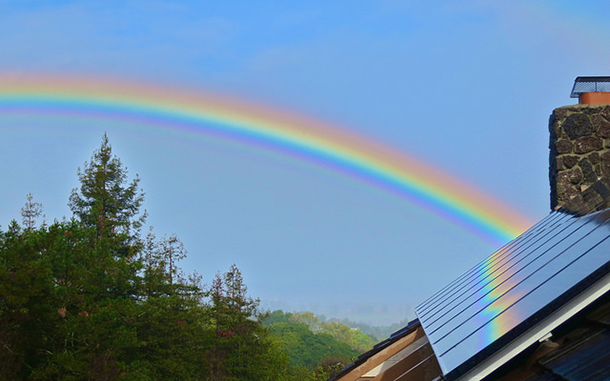
Stern points to technological innovations—and the plunging prices of existing technologies—as reasons to remain optimistic about humanity’s future relationship with the environment. The cost of solar panels today is more than 100 times lower than the cost 38 years ago. In 1977 solar panels cost $76.67/watt, while in 2013 they cost only $0.74/watt. (Photo: Steve Jurvetson, Flickr CC BY 2.0)
STERN: There's been a tremendous change in technology it has been quite extraordinary. When we started that work 10 years ago, we published nine years ago, I wouldn't have imagine that most of the main producers would be producing hybrid cars or electric cars. The cost of a solar PV panel has crashed by a factor of 10, divided by 10, gone down by 90 percent. The creativity is quite phenomenal. The potential for energy efficiency, from using digital methods much more closely. We're very close to the electric driverless car, which would make much more efficient use of our roads. I think the reason that there's some optimism in my voice is associated with quite extraordinary technological change and is associated with the quite extraordinary change in the understanding of this problem in the biggest emitter and that's China. So I'm optimistic about what we can do. This is a potentially extremely attractive opportunity. I'm not necessarily so optimistic about whether we will do it, and that's a big question.
CURWOOD: Nicholas Stern is author of Why are we Waiting? The Logic Urgency and Promise of Tackling Climate Change. He chairs the Grantham Research Institute on Climate Change, he is President of the British Academy and Professor of Economics and Government at the London School of Economics. Lord Stern, thanks for taking the time with me today.
STERN: A real pleasure to talk with you, thank you.
Related links:
- About “Why Are We Waiting?”
- 2006 Stern Review on the Economics of Climate Change
- Stern believes climate change could be worse than he predicted in 2006
- Stern TED Talk about the State of the Climate
- About Nicholas Stern, Center for Climate Change Economics and Policy
[MUSIC: Davie Jacobs-Strain, Earthquake, An Ocean or a Teardrop, Northern Blues Music, 2004]
CURWOOD: Living on Earth is produced by the World Media Foundation. Our crew includes Naomi Arenberg, Bobby Bascomb, Emmett Fitzgerald, Lauren Hinkel, Shannon Kelleher, Helen Palmer, Adelaide Chen, Jenni Doering, John Duff, James Curwood, and Jennifer Marquis. Thanks this week to Wes Olson, and Tourism Saskatchewan. Our show was engineered by Tom Tiger, with help from Jake Rego, Noel Flatt, and John Jessoe. Alison Lirish Dean composed our themes. You can find us anytime at LOE.org - and like us, please, on our Facebook page - it’s PRI’s Living on Earth. And we tweet from @LivingonEarth. I'm Steve Curwood. Thanks for listening.
ANNOUNCER1: Funding for Living on Earth comes from the Grantham Foundation for the protection of the environment, supporting strategic communication and collaboration in solving the world’s most pressing environmental problems. Support also comes from the Kendeda Fund and Trinity University Press, publisher of ”Moral Ground: Ethical Action For a Planet In Peril.” 80 visionaries who agree with Pope Francis. Climate change is a moral issue for each of us. T-U-Press dot org.
ANNOUNCER2: PRI. Public Radio International
Living on Earth wants to hear from you!
Living on Earth
62 Calef Highway, Suite 212
Lee, NH 03861
Telephone: 617-287-4121
E-mail: comments@loe.org
Newsletter [Click here]
Donate to Living on Earth!
Living on Earth is an independent media program and relies entirely on contributions from listeners and institutions supporting public service. Please donate now to preserve an independent environmental voice.
NewsletterLiving on Earth offers a weekly delivery of the show's rundown to your mailbox. Sign up for our newsletter today!
 Sailors For The Sea: Be the change you want to sea.
Sailors For The Sea: Be the change you want to sea.
 The Grantham Foundation for the Protection of the Environment: Committed to protecting and improving the health of the global environment.
The Grantham Foundation for the Protection of the Environment: Committed to protecting and improving the health of the global environment.
 Contribute to Living on Earth and receive, as our gift to you, an archival print of one of Mark Seth Lender's extraordinary wildlife photographs. Follow the link to see Mark's current collection of photographs.
Contribute to Living on Earth and receive, as our gift to you, an archival print of one of Mark Seth Lender's extraordinary wildlife photographs. Follow the link to see Mark's current collection of photographs.
 Buy a signed copy of Mark Seth Lender's book Smeagull the Seagull & support Living on Earth
Buy a signed copy of Mark Seth Lender's book Smeagull the Seagull & support Living on Earth

